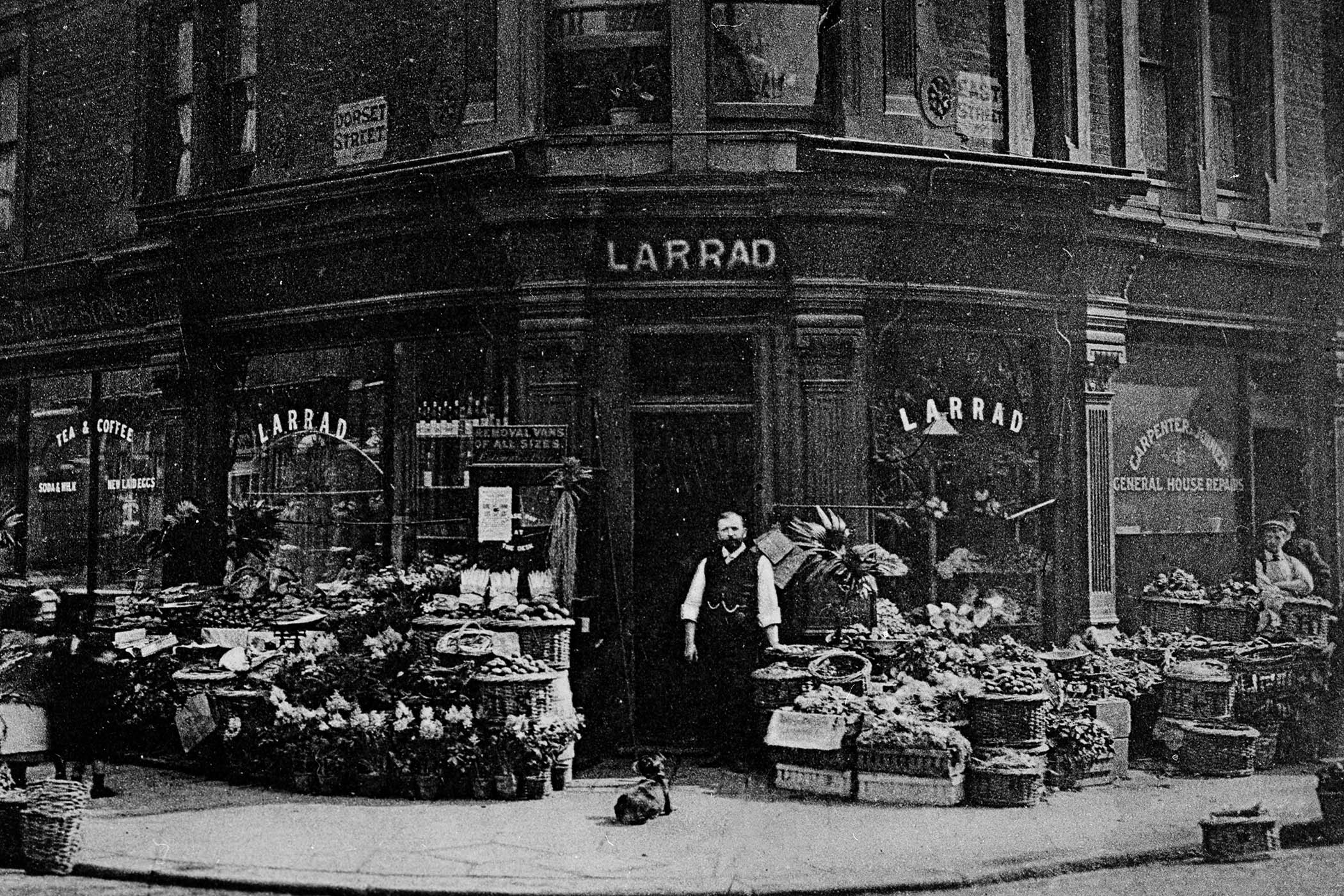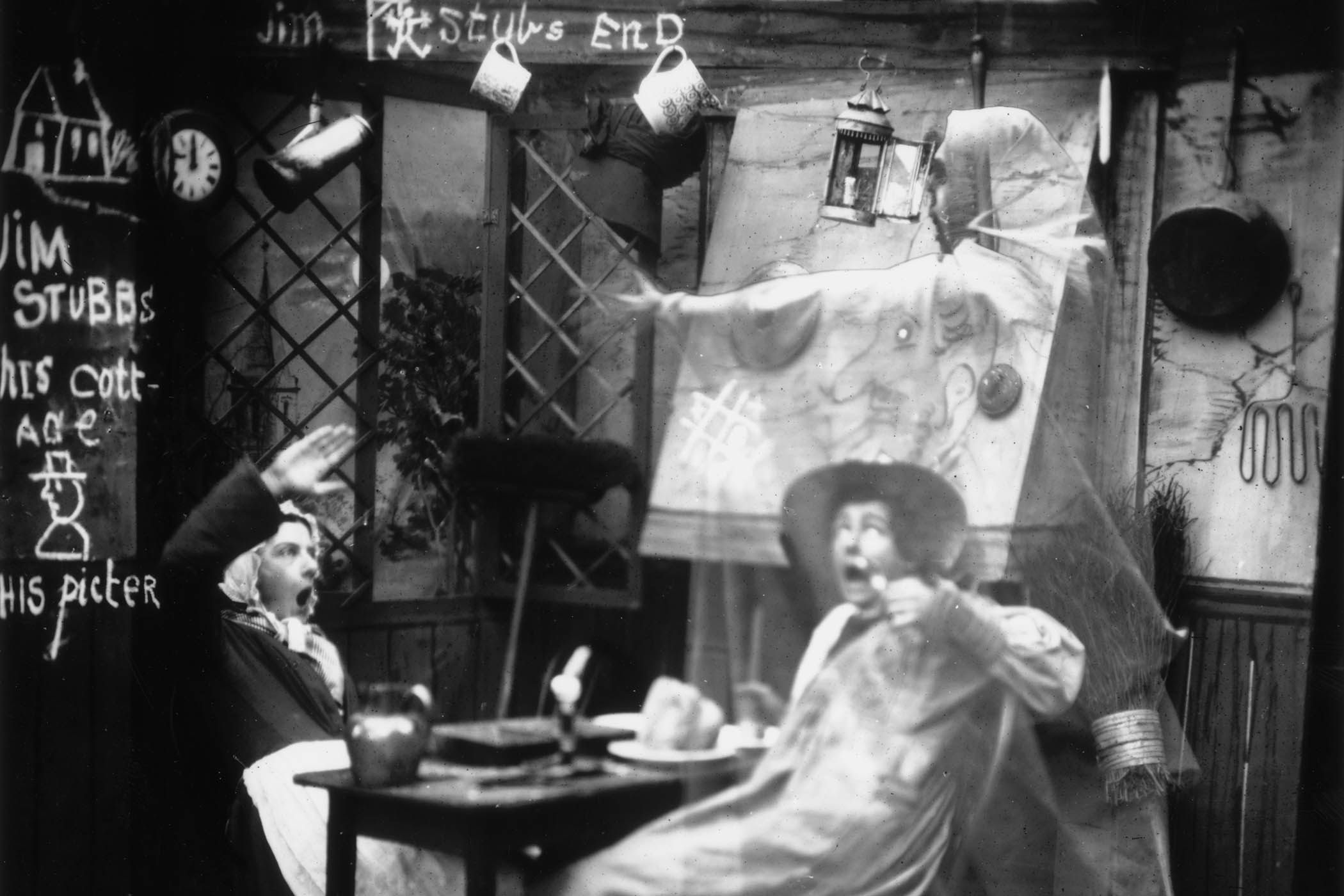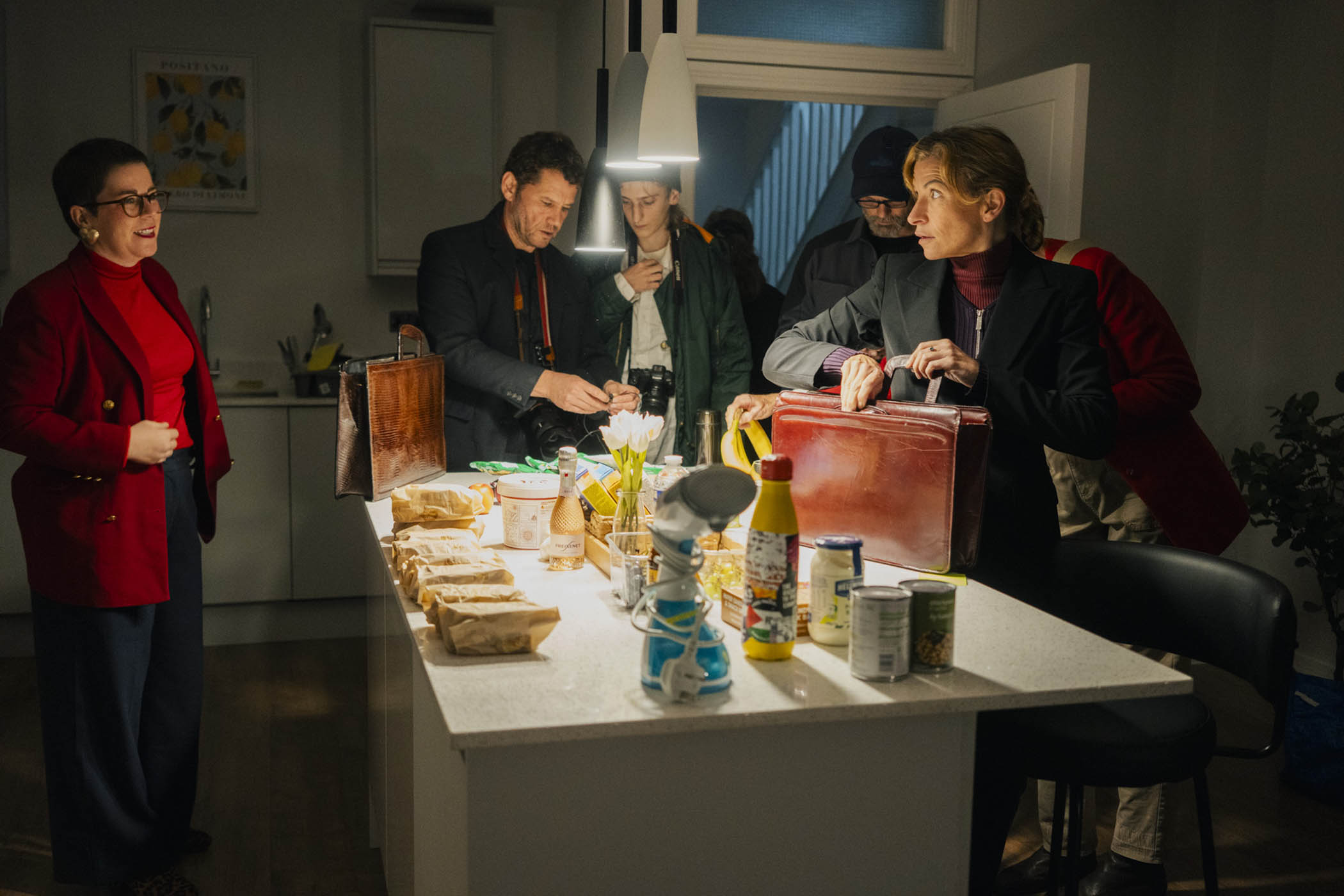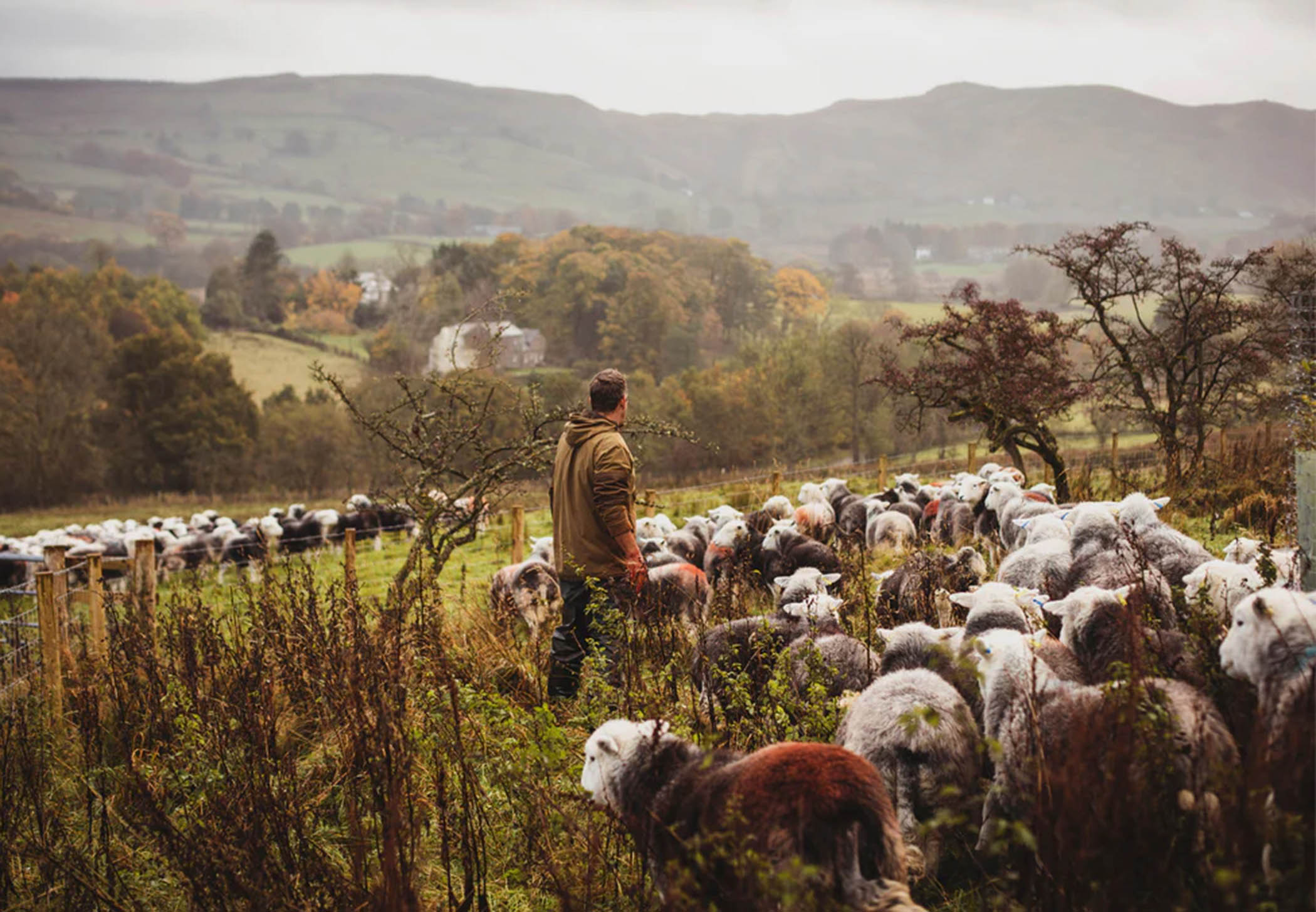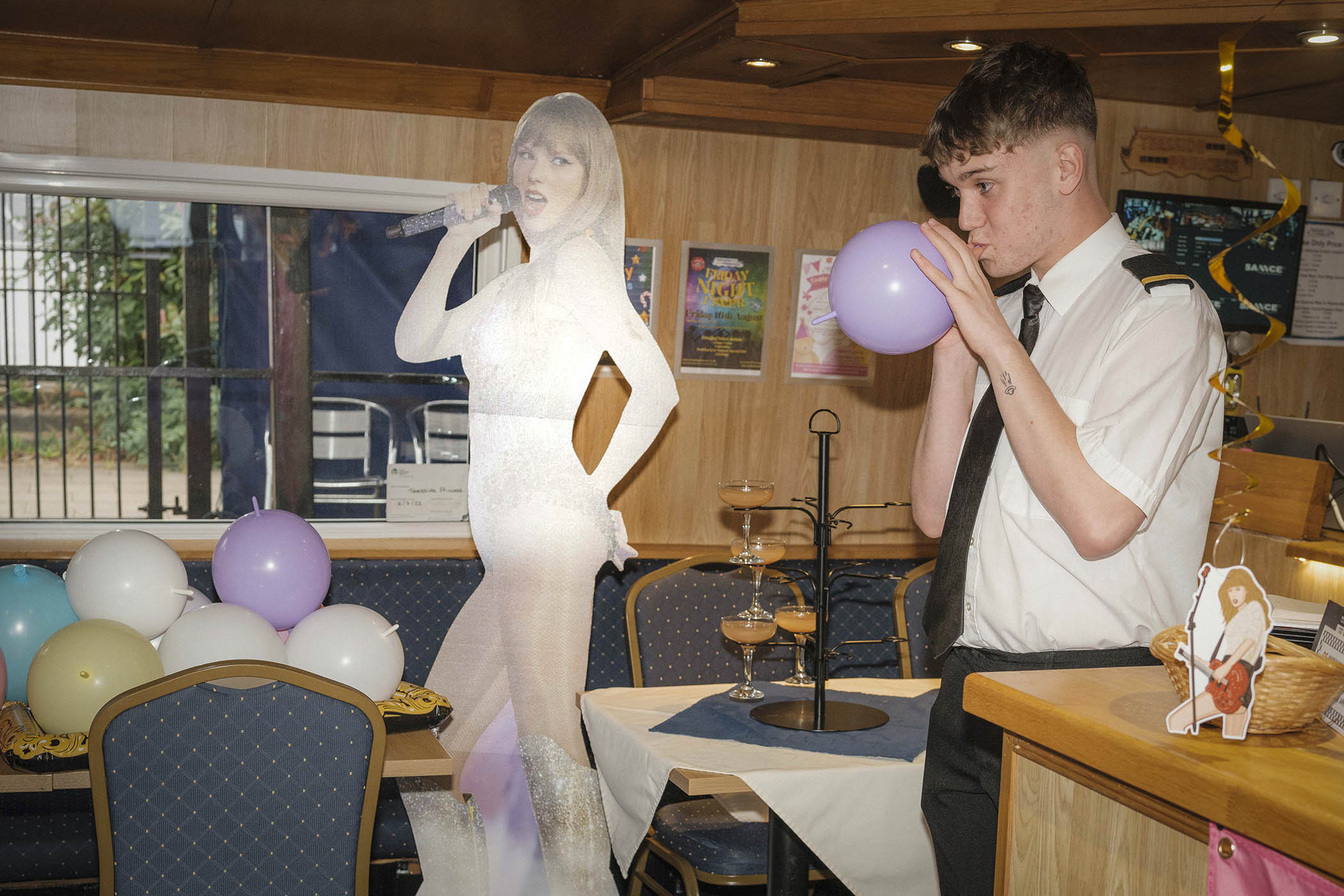
In a corner of Britain scarred by post-industrial decline, the Teesside Princess sails up and down in a spirit of resilience. Has talk of regeneration buoyed spirits on board?
It was only when the lifesize cardboard cutout of Taylor Swift toppled over, sending a tray of vodka shots rolling to the floor, that things really started to get messy. Up until that point, the Swifties boat party – a three-hour sailing trip down the River Tees (adults only, dressing-up encouraged) – had unfolded in an atmosphere of mild-mannered debauchery. Themed cocktails were drunk on the deck. Selfies were taken underneath the balloon arch. Contestants in a Taylor Swift quiz fought combatively, but generally without violence.
Now though, as the sun began to set upon the waterway and a laser light show burst into life within the gloriously ramshackle Teesside Princess, any last semblance of restraint disappeared. One young woman in a Taylor Swift mask became entangled with her friend in a thicket of pink streamers hanging over a doorway, and brought it crashing down in a riot of giggles and hotpants. Another young woman in a Tay mask commandeered a microphone from the DJ and launched a singalong to Bad Blood. An unseen hand grabbed my pen and notebook. By the time I wrested them back, the words “Fuck Jake G!” (a reference to Swift’s former boyfriend Jake Gyllenhaal) had been scrawled on several pages.
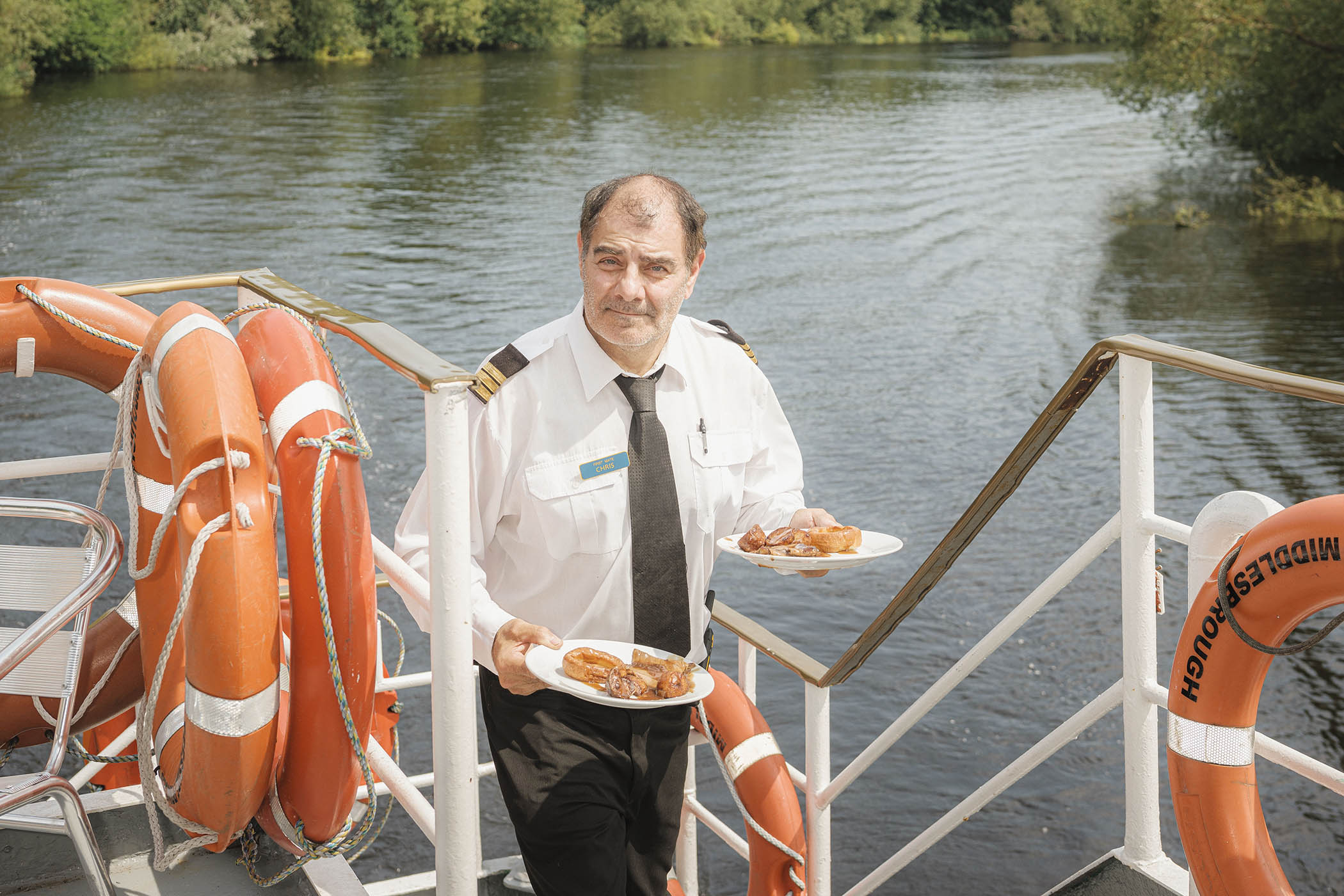
Chris Hughes-Rutherford, DJ and first mate, delivers roast dinners to diners aboard the Teesside Princess. Main image: Jenson Westwood, a waiter on the Teesside Princess, blows balloons before a Taylor Swift-themed party
I left the chaos for the helm, where 70-year-old skipper Colin Robinson was at the wheel. The following evening he would be back here again, piloting the boat as it hosted a traditional roast dinner for a largely elderly clientele; the day after that, the decks would be heaving with children enjoying afternoon tea while dressed as characters from the Disney film Frozen. On the Princess, a history-laden pleasure cruiser that has come to symbolise this corner of post-industrial Britain, the whole of life is on display – and Robinson smiles indulgently through it all.
He navigated us around the tight bends of the Tees, which winds eastwards from the Pennines before emptying out into the North Sea. As he did so, Robinson gave me a slow roll-call of the huge manufacturing plants that once dominated this skyline – iron, steel, shipbuilding – and which have now been shuttered or razed. “It’s sad, there’s not much to hold people up now,” he said, before suddenly grabbing my arm and pointing me towards some ripples up ahead. Through the shimmering disco lights of the Princess, I could just make out a family of otters, diving noiselessly for fish amid the gloom.
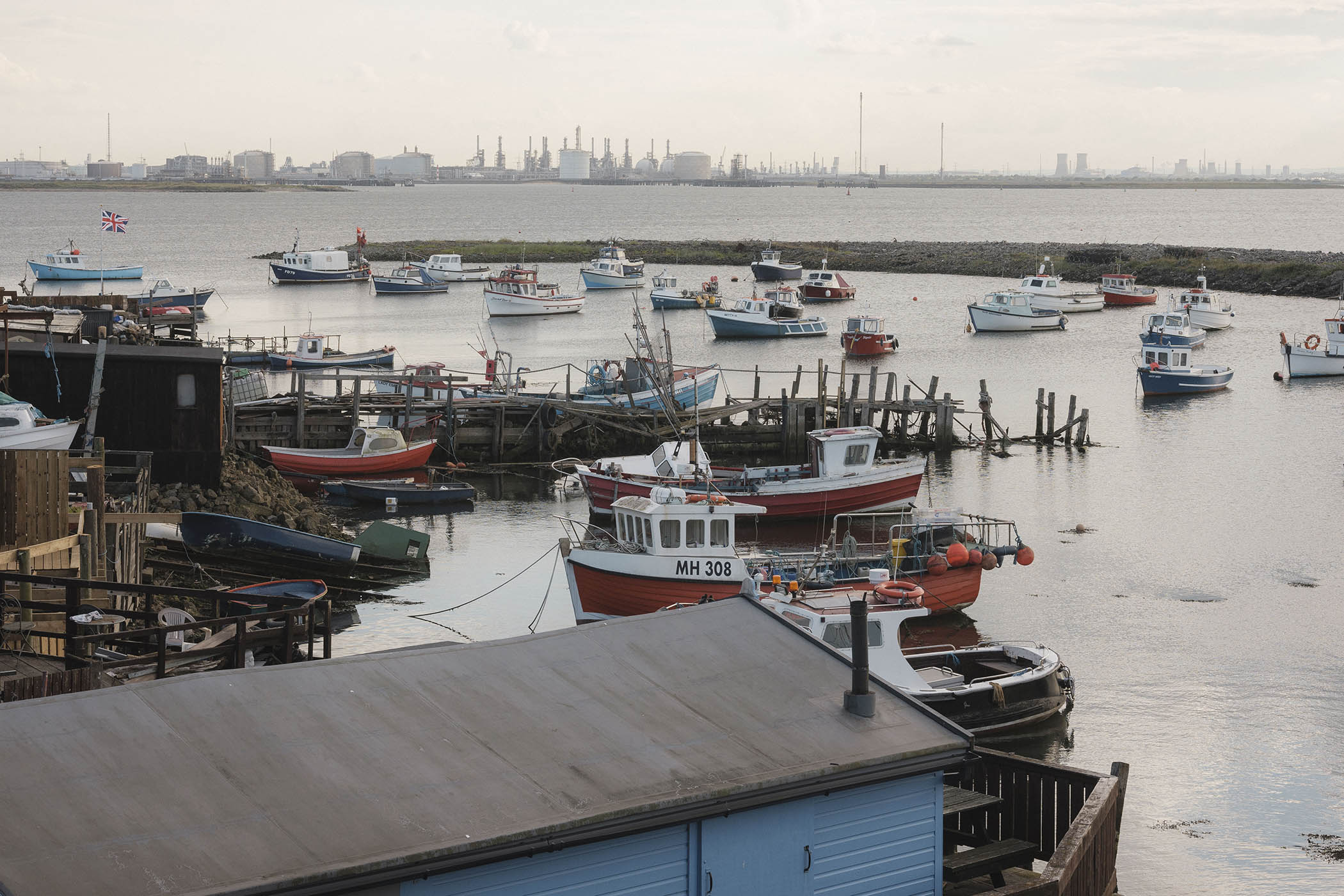
Fishing and pleasure boats moored at Paddy’s Hole on the South Gare peninsular at the Tees estuary
Teesside is a proud, scraggly, mishmash of a place, stretching from the affluent market town of Yarm – all boutique shops and cobbled streets – out to the mammoth beach at Redcar, where rusty pipes and hulking chemical drums emerge from behind the dunes. The region’s biggest conurbation is Middlesbrough, but its geographical core lies a few miles to the west in the ancient port of Stockton, which once served as a major maritime hub. In common with the area surrounding it, Stockton – which straddles two English counties and six separate towns – can be hard to pin down; fierce debates over the community’s cultural and administrative identity play out in the pages of the local newspaper. The one thing that really ties Teesside’s many loose threads together is the river that gives the region its name. It was to the river that I was drawn when I first started reporting from the region a few years ago in an attempt to discover whether grand political rhetoric about the regeneration of post-industrial communities had any basis in reality. And it was on the river – on a mooring spot in central Stockton, sandwiched between a curry house and a nail salon – that I found the Teesside Princess.
Related articles:
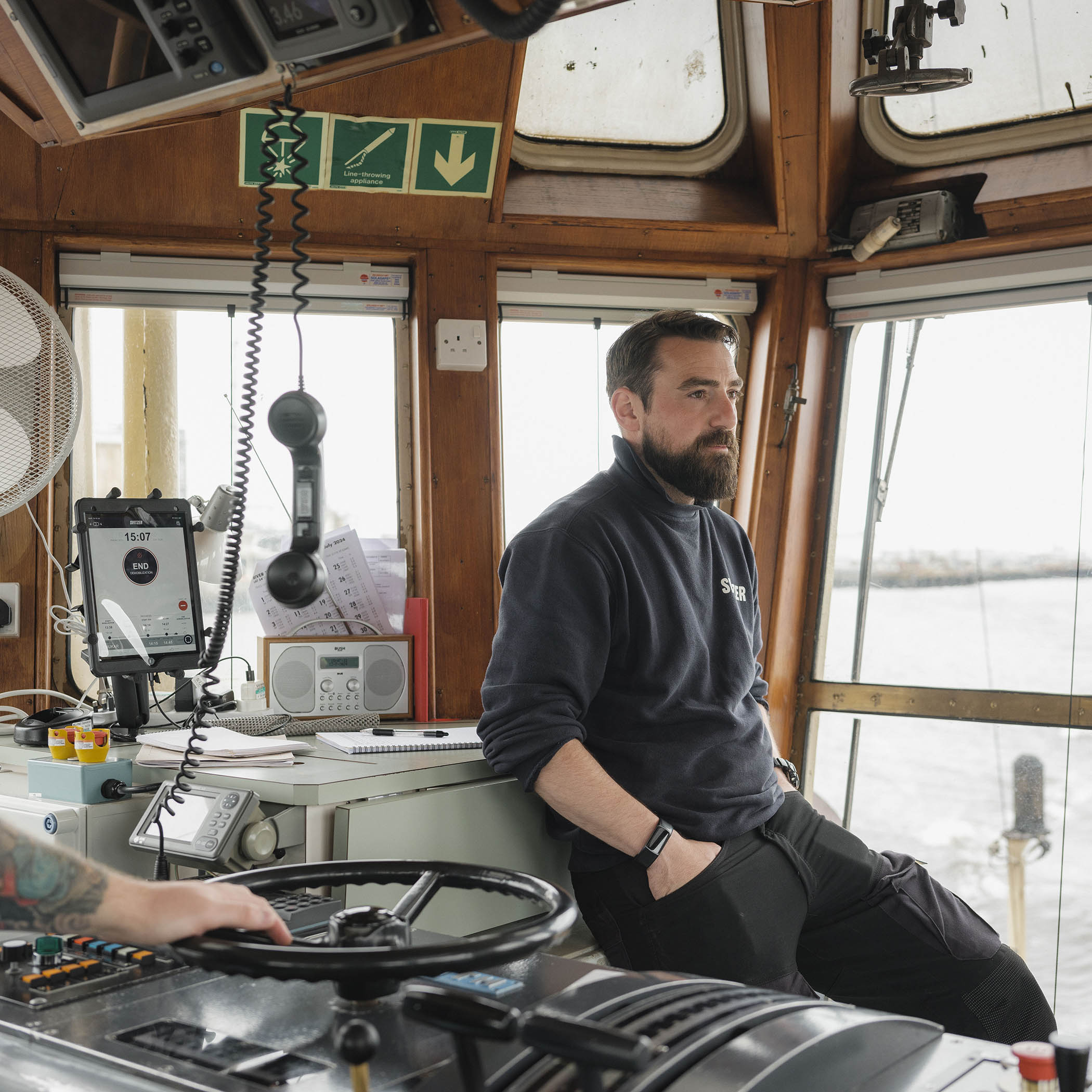
Tug boat master Ben McClean
On a waterway that is home to gargantuan structures, from oil tankers and container ships to barrage dams and soaring bridges, it’s not easy for a modestly-sized pleasure craft to stand out from the crowd. But the Teesside Princess managed it, not so much for its appearance but because of the way in which it seemed subtly woven into the fabric of so many people’s lives here. The height of a house and the length of a swimming pool, the 100-capacity vessel began life at a boat-builders in nearby Hartlepool in the mid-1990s, before taking up residence at its current home: a landing stage directly opposite the site of Margaret Thatcher’s infamous “walk in the wilderness”, an ill-judged photo-op in 1987 that featured the Conservative prime minister striding across the ruins of a once-bustling engineering works that was now rubble and weeds.
By the end of Thatcher’s premiership, almost a quarter of a million jobs on Teesside had been lost, changing the face of the Tees for ever. It was into that wasteland that the Teesside Princess launched. “Everything else has come and gone,” says Chris Hughes-Rutherford, who has worked on the vessel for nearly three decades and is the veteran of a thousand local school trips, raucous booze cruises, and musical tribute nights. “But we’re still here.”
That note of defiance could be heard whenever I talked to people about the Princess. “She’ll be tooting her horn long after the rest of us have gone,” one old-timer told me during an afternoon sailing, as he tucked into a meat and gravy lunch buffet. On another occasion, a passenger who had travelled by bus from Sunderland to enjoy a cruise said that she had no doubt that in years to come her daughter and her granddaughter would be doing the same. When I asked Nathan Hobday, owner of the Teesside Princess, why he thought his boat evoked such strong emotions, he paused for a moment before gesturing out at the river. “People here have gone through a lot: a lot of change, a lot of pain, a lot of promises,” he said. “And the Princess… well, she’s a survivor.”
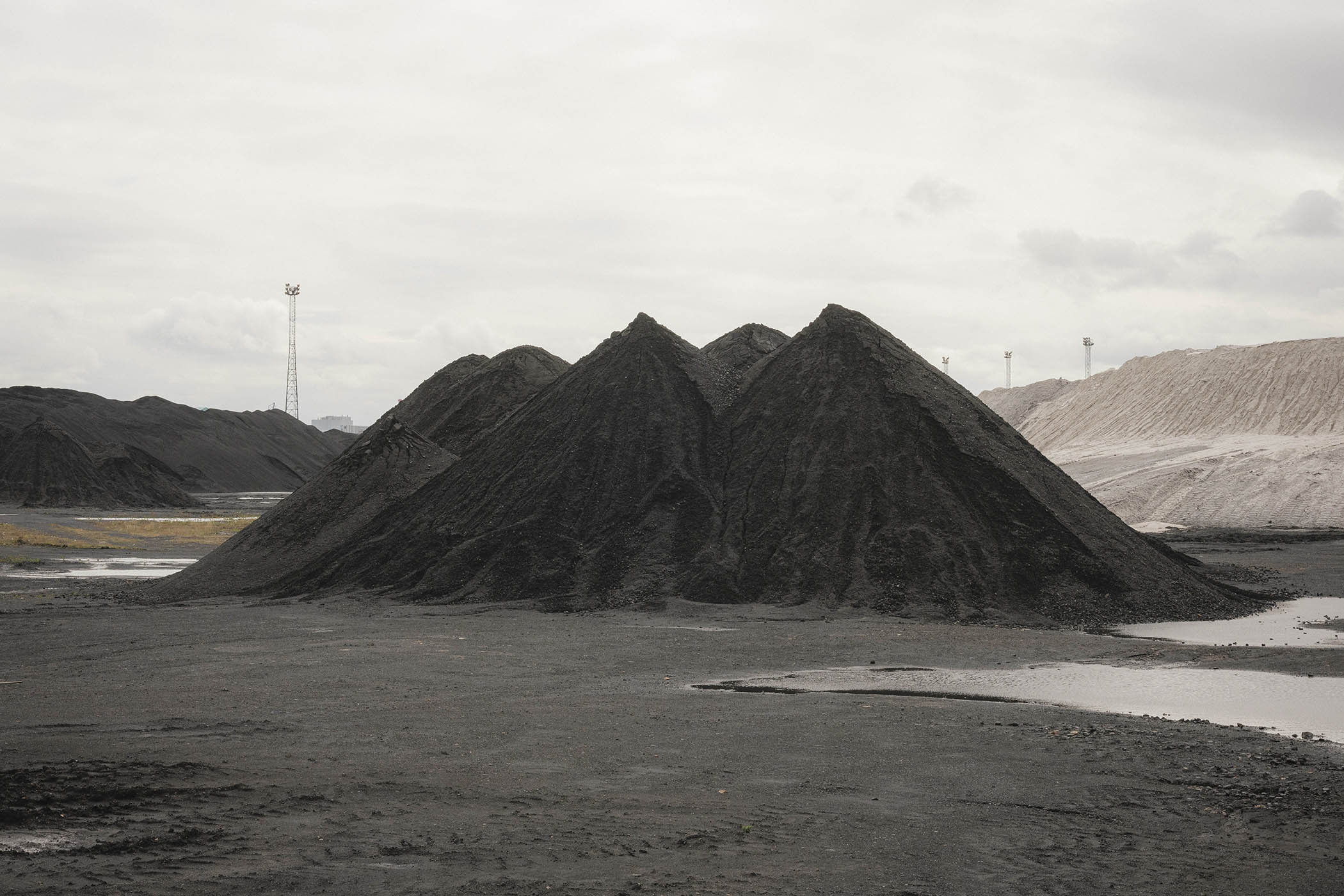
A slag heap on the site of a concrete manufacturer near the shores of the River Tees
Hobday is only a few years older than the Princess. Just like his boat, he has spent most of his life on the water. He is well-versed in Teesside’s rich mythology: the astonishing 19th-century transformation of a largely rural backwater into an industrial powerhouse fuelled by iron ore mined from the Cleveland Hills; the rise of Middlesbrough’s “Ironopolis” in the Victorian era; the global landmarks – from Manhattan skyscrapers to Sydney Harbour Bridge – that were built on Teesside and remain standing today. “We were known as the ‘infant Hercules’,” he told me, referring to a nickname bestowed on the area by William Gladstone in the 1860s. “And we thought we always would be.”
Part of the reason for that optimism stemmed from the way that Teesside had always bounced back from adversity. In the early 20th century, the metalworks that loomed over the riverbank were joined by giant petrochemical plants; ICI’s ammonia factory at Billingham, just a couple of miles downriver from the Princess, was one of the most important fertiliser production sites in the country, and the inspiration behind Aldous Huxley’s dystopian masterpiece Brave New World. Even after Thatcherism, the area clung to its status as an industrial heartland – its inhabitants were known as “Smoggies”, owing to the clouds of pollution that belched from Teesside’s chimneys throughout the day.
The majority of those chimneys were associated with Teesside’s defining product: steel. At the industry’s height, 91 different blast furnaces stood within a 10-mile radius of the river’s eastern reaches. “From the sea, you would use the glow of the steelworks to find your way back home,” Hobday says. “When the last furnace came down, it was like someone flicked a switch. Suddenly the whole landscape was this big, black abyss.”
Hobday was born and raised in Redcar, a place so interwoven with the life of the steelworks that one of its main neighbourhoods is named Dormanstown, after the former steelworks Dorman Long. He spent his childhood cycling out along the nearby breakwater to South Gare, home to a lighthouse that marks the end of the Tees and the start of sea, where shoals of mackerel attract hardy fishermen and hungry seals. Some of his fondest memories involve being taken by his aunt and uncle for rides on the Teesside Princess, where he would always pester the captain for a chance to blow the horn.
By the time he left school at 17, Hobday was itching to start manning vessels of his own. His first role was as a lifeboat volunteer; he worked his way up the river’s labour ecosystem, becoming a general deckhand on the pilot boats that guided the biggest ships into port. In the 2010s, he says, “we were the first to suspect that something was wrong, because jobs kept getting cancelled due to the steelworks struggling to pay its bills”. Cheaper Chinese steel imports had started flooding the global market, and the coalition government was unwilling to provide the state subsidies that the steel industry depended upon in other western nations. In 2015, the last remaining blast furnace at Redcar shut down for good. The structure had taken five years to build and dominated the Tees horizon for half a century, producing more than 10,000 tonnes of iron a day at its peak. Demolishing the furnace required 175kg of explosives. It collapsed in seconds.
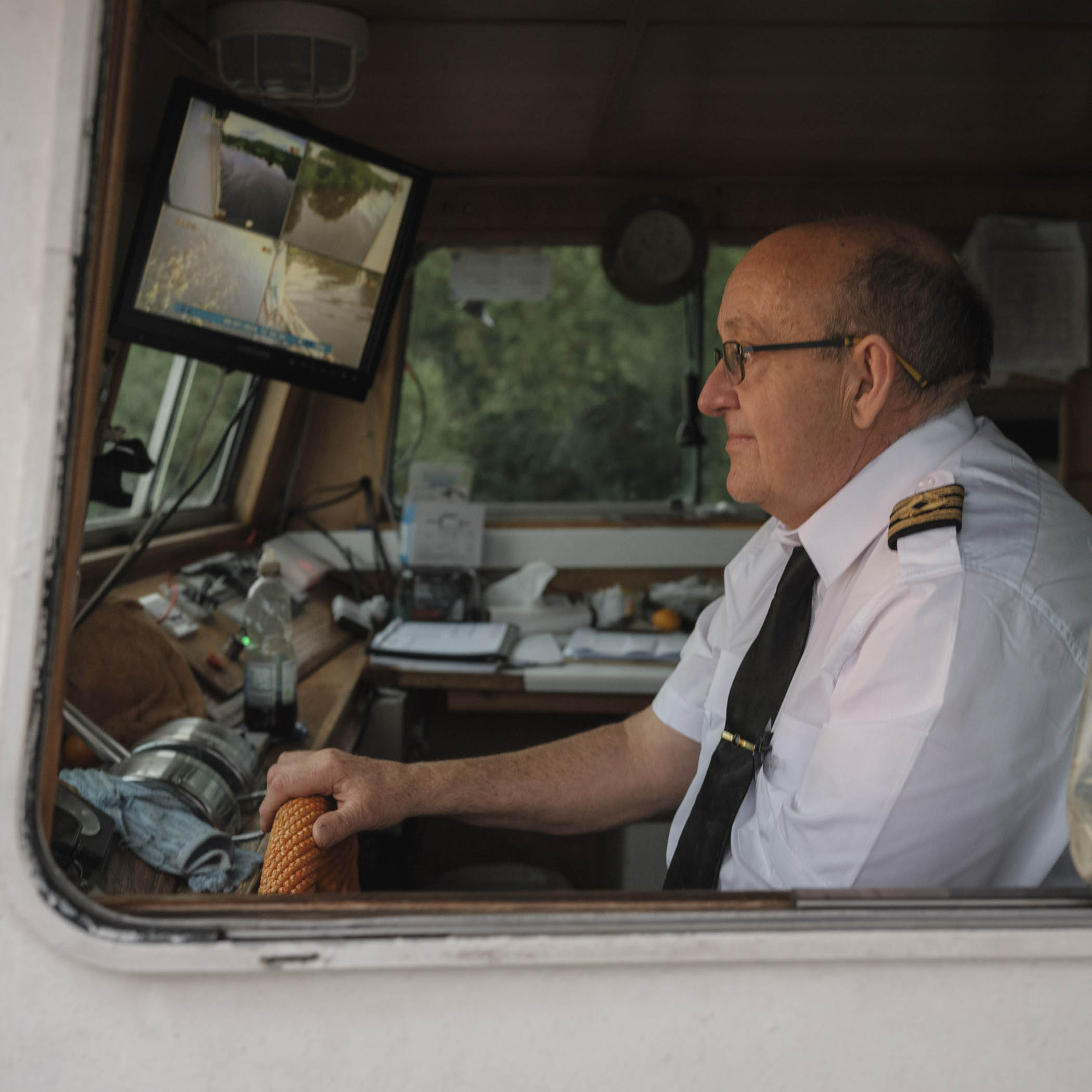
Teesside Princess skipper Colin Robinson
From the deck of the Teesside Princess that day, preparations were under way for the boat’s annual run of Christmas-themed Santa cruises; the demolition registered as little more than an eerie, deadened boom. But the end of 150 years of Teesside steelmaking reverberated along the length of the river in deeper and more enduring ways. Some of them can be counted in official statistics: thousands more job losses; a huge surge in benefit claims, house repossessions, and mental health concerns; rising rates of child poverty, afflicting up to 85% of the population in the worst-affected council wards. “There was no one in Redcar who didn’t have a family member, or know someone in the steel works,” Hobday says. “And then one day it wasn’t there, and we were losing our identity. Everything around us felt a little bit fake.” In Redcar, retailers left the high street one by one. The local authority installed “virtual shops” in their place – photographic simulations of furniture outlets, bookstores and buzzing cafes were plastered over security shutters.
The Princess – which stages birthday celebrations, graduation parties, weddings and wakes – became a floating symbol for a community that doesn’t have a lot left to call its own. It was never plain sailing. “We’ve had our dramas,” admits Hughes-Rutherford, the first mate, who told me about the time the vessel almost got stuck in the lock at the Tees Barrage; the time a mechanical problem necessitated a (sedate) rescue of all the passengers near Preston Park; the time a hen party at which all the guests were dressed up as grannies spiralled out of control. His favourite spot on the boat is in the DJ booth on the lower deck, microphone in hand, running through the highlights of the beautiful, knotty river that he loves.

Fishing and pleasure boats moored at Paddy’s Hole on the South Gare peninsular at the Tees estuary
“All my kids have worked on the Princess at one time or another,” he says. “The lad serving drinks today is my grandson.” From some angles, with its wooden veneer panels and starched tablecloths, the Princess can look like an anachronism. From others, it looks more like a resurrection.
For most of the post-steel era on Teesside, the Princess was under the ownership of local businessman Ian Edge. He bought the boat in an auction by outbidding investors who planned to remove it from the area and establish it as a floating residential property in southern England. After the loss of the Redcar blast furnace, Edge began marketing the boat as a cultural icon for the area, providing a way for young people to connect to the river and offering free hire to local charities. When Edge tragically died last summer in a skiing accident in the French Alps, Hobday, who was running a marine services operation, bought the Princess from his widow. He felt he had to. “It’s a bit like being out at sea,” he says, “when things go wrong, you have no option but to get on with it and find a workaround. You can sit in the wheelhouse and scream and swear until you’re blue in the face, but this is your reality now. You have to move forward.”
Today, the development brochures say, Teesside is on the move – though in what direction, and toward whose interests, remains to be seen. In Stockton, the Labour-led local authority is overseeing one of the most ambitious regeneration projects in Europe: buying up great swathes of land in the struggling town centre. If all goes to plan, Stockton’s future will include a new waterfront park three times larger than Trafalgar Square, with an amphitheatre that gazes down directly upon the Princess’s landing stage. “I don’t want this town to die on my watch,” Nigel Cooke, the councillor chiefly responsible for driving through the changes, told me. “I don’t want that to be my legacy.”
People here have gone through a lot of pain, a lot of promises. And the Princess… well, she’s a survivor
Downriver, east of the Princess, cranes and trucks are buzzing around the site of the old steelworks – now home to the Teesworks “freeport”, a low-tax investment zone championed by the Conservative Tees Valley mayor, Ben Houchen, which has been mired in allegations of corruption (Houchen, who declined to be interviewed for this story, firmly denies any wrongdoing; an independent review published in 2024 found no evidence of illegality, but criticised a lack of transparency among the project’s leaders). The vision here is of a new clean, green industrial hub that will bring jobs back into the area – featuring a biomass energy plant, a factory specialising in wind turbine production, and a carbon capture operation backed by billions of pounds worth of central government funding.
Out on the river’s tugboats, among the froth, slosh and grime of the waterway, workers remain sceptical. “There’s lots of activity, it’s true, but the economy has changed now,” one explained to me. “That old-school capitalism – where the message was if you work hard, you’ll get on, and be able to afford a house and a mortgage and a family and all that – it’s just not there any more.” It was a refrain I heard time and time again on Teesside: in pubs, clubs, high streets, and on the decks of the Princess. New opportunities are promised, but the kind of security that the steel industry once promised – both economic and psychological – remains out of reach. “From land, you can’t really spot anything behind the Teesworks building site hoardings, other than emptiness” said another crew member on the tugboat. “At the moment, we’re struggling to see the future.”
“It’s been a boiling kettle for a while now,” Hobday said to me. “Pretty much everyone around here has worked their bollocks off at some point, grafting at a shit job to earn some kind of crust, and they feel like they’re getting screwed over. People think they deserve more.” On a Sunday afternoon in August last year, the kettle began to boil over. A rally in Middlesbrough, ostensibly to honour the victims of a knife attack in Southport, descended rapidly into street violence: some protesters clashed with police, set fire to cars, and – in horrific images that travelled around the world – constructed makeshift checkpoints in order to check the ethnicity of passing motorists. A community that was built upon waves of international migration, particularly from Ireland and Italy, and which dispatched volunteers to fight fascism during the Spanish civil war, was now playing host to a far-right riot. Hobday was forced to send staff down to man the Teesside Princess, for fear she would be targeted in the disorder.
For Kirsty Galloway, a youth worker in Middlesbrough who helps run children’s services in some of the poorest parts of the town – the events of last summer were a personal heartbreak. “There’s frustration, and nihilism among many of the young people,” she told me. “Their dads were told that they could get an apprenticeship at the steelworks and they’d be set for life; these kids don’t have that. What they do have is access to social media where simple but incorrect explanations for poverty – blame the immigrants – quickly find an audience.” Galloway’s charges are racially diverse and generally get on well inside the youth centres, but some of them ended up actively fighting one another during the unrest. I spent time at two of Galloway’s youth clubs, asking attendees what they were hoping to do once they left school. Several mentioned becoming social media influencers or stars on TikTok. “A lot of people just want to run away and make their fortune,” one teenager told me. I asked her where to, and she shrugged. “Anywhere but here.”
For Hobday, part of the Princess’s purpose is to change the relationship teenagers like her have with the thorny concept of “here”. “People ask me why I’m doing this, and the answer is that I don’t really know,” he said. “It doesn’t involve prestige. And it’s not about the money.” We were sitting outside at the back of the boat, with the arches of Stockton’s Infinity Bridge reflected in the water behind us. “I guess, like many others, I feel obligated to find a succession plan for this river – because without it I wouldn’t be who I am today. It gives me a reason to get up in the morning. And I don’t know how exactly, but the Princess seems to be a part of that.”
Photographs by Rob Stothard
Editor’s note: our recommendations are chosen independently by our journalists. The Observer may earn a small commission if a reader clicks a link and purchases a recommended product. This revenue helps support Observer journalism.
